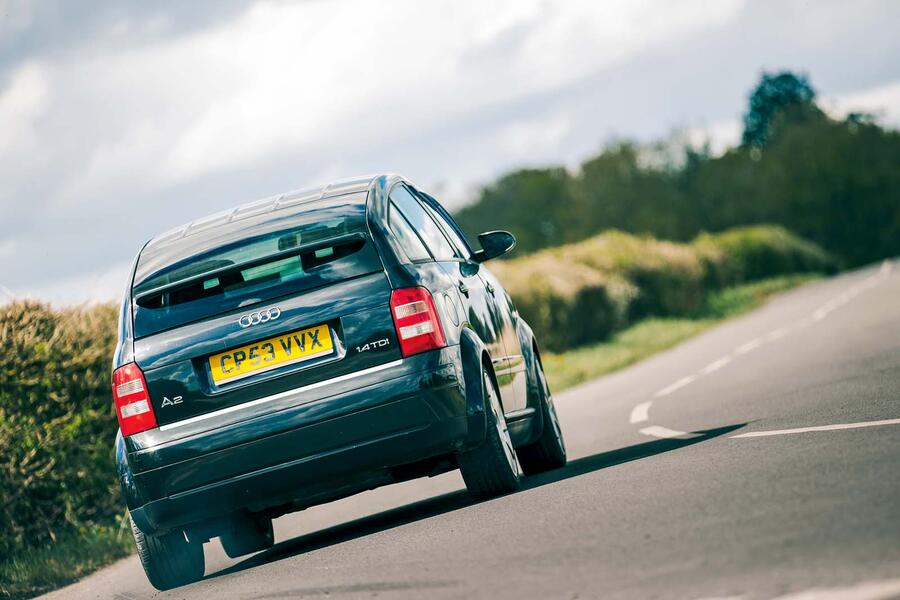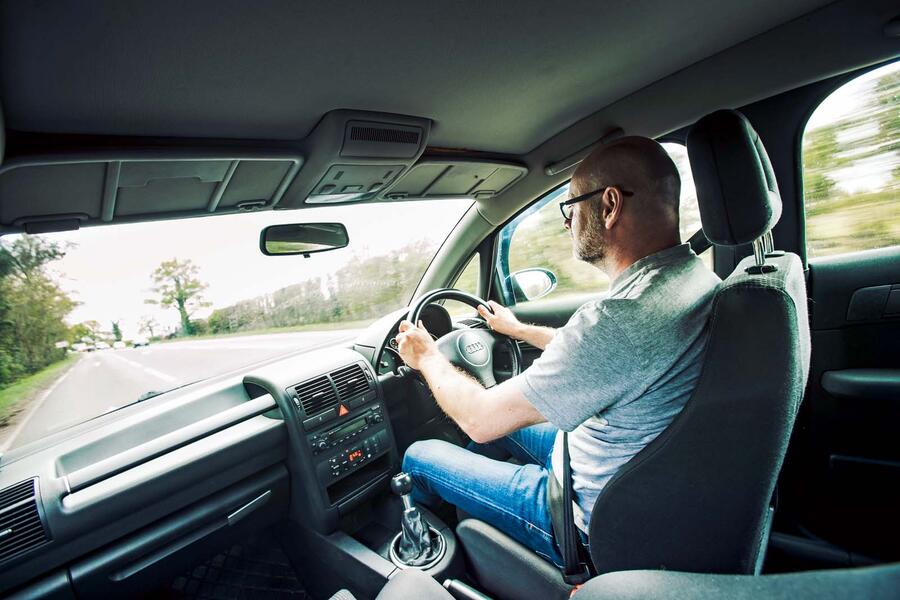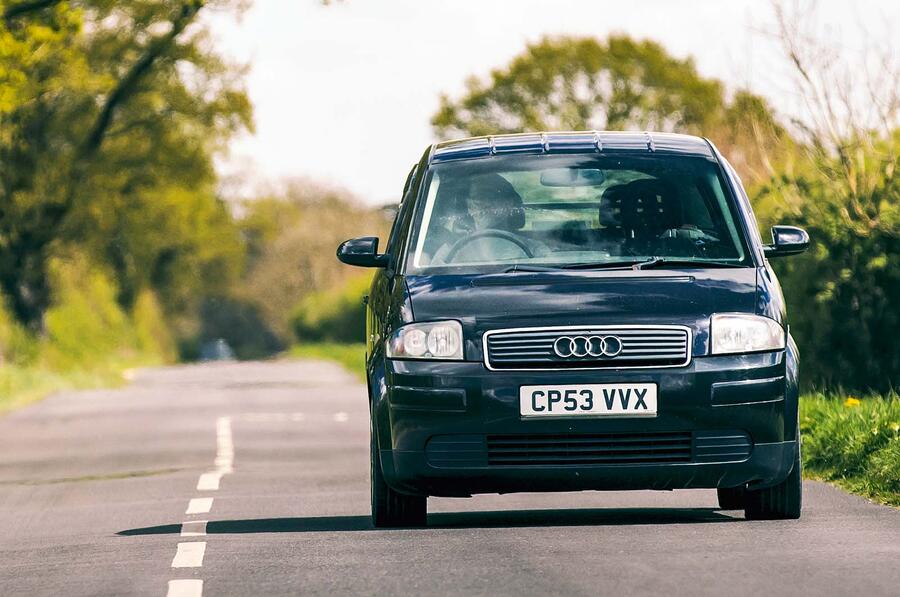Audi’s A2 was seen as being ahead of its time when it arrived in 1999. Was it?
One of the things people love to say about the Audi A2 is that it was ahead of its time. It’s the opinion people seem to hold most about the small Audi.
And I get that: if you pulled the wraps from it today, it would still look modern. In October last year, Audi did just that, when it revealed the A2 E-tron concept restomod to celebrate the car’s 25th anniversary, and it looked as fresh as a piglet.
But if the A2 was ‘ahead of its time’, it must still be a long, long way ahead of its time, because more than a quarter of a century after it was launched, the world is not oversupplied with compact aluminium four-seaters that weigh less than 900kg and measure 3.8m long.
No, instead the family car market is filled with very un-A2ish things: steel, heavy and crossovery. Influentially, and financially, the Audi A2 was a dead end. Audi sold just 176,000 of them globally over five years, at a time when Ford was selling 125,000 Focuses, in the UK alone, every year.
The car that has come closest to following it, spiritually, was perhaps the BMW i3. BMW sold fewer than 25,000 of those a year too.
And yet, and yet. What we once called Audi’s “nearly successful†A2 must have made a cultural impact because, believe me, people do like to talk about it.

I’ve written about thousands of different cars over the years but my inbox has never known anything like the correspondence I’ve received since I bought an A2 in February. I’ve heard from the owners’ club, talked with an owner who also has a McLaren F1, and heard from a guy who owns eight A2s.
My car’s previous owner was grateful I picked it up early, because he didn’t want his mum to visit and see it was going. I still don’t know enough about the A2, but I’m starting to see how it’s adored. And it’s easy to understand why.
For a start, it looks cute. Remember, the ’90s was a decade in which Audi showed the Avus concept and went on to make great-looking A4, A6 and A8 models, and when the A2 arrived in late 1999 it had recently launched the TT. It was cooking.
Then there’s the cleanness of lines and the efficiencies that come with that. If you tried, you could (as Audi’s apprentices did with the A2 E-tron concept) clean up some of the details – the exposed windscreen wiper and protruding door handles – to make it even more slippery.
But with a drag coefficient of 0.25-0.29 depending on model, and the small frontal area given by its 1.67m body width and 1.55m height, it was an extremely efficient car.
“Only an electric car or a very frugal diesel uses less fuel,†we said in its 2000 road test. (‘Electric’ referencing the hybridised £17,000 Honda Insight, the Audi’s nearest –only – hypermiling rival of the time.)

At nearly £16,000 for a 1.4 petrol SE, the A2 looked relatively expensive then, especially if you compared it with similarly sized cars. Even against a Volkswagen Golf, we thought it initially looked “overpriced and undersizedâ€, a problem Mercedes-Benz had been suffering with the A-Class, a similarly small car that offered cleverer than typical packaging to create additional interior space.
But when you factored in residual values, plus the A2’s fuel efficiency, ownership costs would have been extremely competitive. Buyers didn’t see it that way, though.
It’s a shame, but perhaps no great surprise, that the A2 received no direct replacement, and that Mercedes eventually let the A-Class morph into the trad C-segment hatchback it remains today.
Now the A2 exists solely as a modern classic, then, and it is still relatively common: howmanyleft.co.uk says there are more than 5500 on the road across all variants in the UK, which I think is a remarkably high number.
The body doesn’t rust like steel, of course, although insurance costs can be pricey because aluminium panels are harder to repair. Mine cost £250 to insure but a colleague, trying to add his learner daughter, found it was twice as expensive as a VW Polo.
Mine is a 1.4-litre 75bhp diesel, it can return 70mpg on a run and I’m told the things to watch out for are regular cambelt changes and fragile, rust- and fatigue-prone lower suspension arms.
The headlining peels and apparently door hinges can sag, but I suppose I’ll find out more the longer I own the car.

Mechanically, A2s are otherwise from a more simple age, and in using common VW parts (I replaced a wheel bearing, the same as a Golf’s, for £30) plus with a thriving owners’ scene, it should be possible to keep it running indefinitely.
I must do just that. The A2 might not have foretold the future, but it works perfectly well in it.Â




